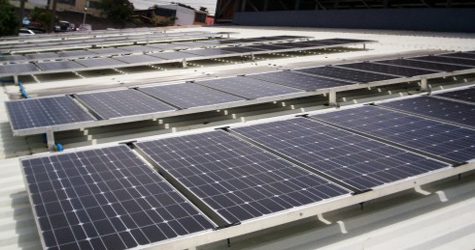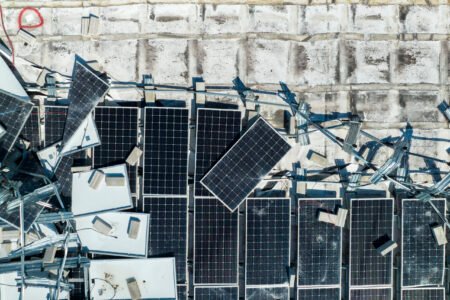More than 1 billion people in the world had no access to electricity in 2012.
Of these, about 400 million people live in India. Scheduled and unscheduled power outages are very common in electrified areas.
A vast majority of these people live in remote villages. At present, about 9 Crore households use mostly Kerosene and some form of biomass for home lighting and cooking purposes. Kerosene is highly subsidised and the under-recovery of Kerosene in 2011 was Rs. 27,532 Crore. Similarly, it is estimated that telecom towers consume about 2 billion litres of diesel per year. Usage of both Kerosene and Diesel lead to high amount of Co2 emissions. In addition, farmers in several states get free power to run water pumps for irrigation purposes, which again leads to huge amount of subsidies.
Off-grid solar systems have the potential to reduce the usage of fossil fuels and eventually eliminate the “energy poverty”. In India, Off-grid solar has already made its presence felt in multiple segments like Home Lighting systems, Telecom Towers, water pumping systems and rural microgrids.
Realising the importance of solar in alleviating the energy access problem, the Ministry of New and Renewable Energy(MNRE), through the flagship Solar programme – the Jawaharlal Nehru National Solar Mission(JNNSM), has set a target of adding 2 GW of off-grid systems by 2022. The deployment of these systems is encouraged by a mix of capital subsidies and soft loans and also appointed channel partners who could implement these systems. As per MNRE, India had about 125 MW of off-grid installed capacity (PV systems of size more than 1 kW) by 31 March 2013.
In the Phase 2 of the JNNSM, MNRE targets to deploy off-grid electricity generation systems in 20,000 villages and hamlets. The Phase 2 will also see the deployment of about 10 Lakh off-grid lighting systems, 25,000 solar pumps and 25,000 solar integrated telecom towers. JNNSM has similar targets in the solar thermal space as well.
Private Sector
The private sector- a mix of social entrepreneurs, NGOs, non-profit organisations and corporates- has also been playing a major role in deployment of these systems. Some of the non-government and private players that have had some notable success include The Energy and Resources Institute (TERI), Tata Power Solar, d.light, SELCO Solar, Simpa Networks, Minda NexGenTech and Gram Power.
Microgrids
The future of off-grid PV is taking the shape of micro-grids that can power entire village communities. Other renewable energy sources can also be integrated into micro-grids. The operators of the micro-grids have to overcome the risk of default by the users in village, who usually are very poor and have unpredictable daily wages. This challenge is being overcome by the installation of pre-paid metering systems. Some companies like Simpa Network have developed mobile phone based “Pay-As-You Go PV system”.
Challenges
While the potential for off-grid solar systems in India is huge, the challenges are also immense. The following are the 3 major challenges in the large scale deployment of off-grid systems
- Geographic remoteness – Most of the unelectrified regions are located in far flung villages with very little road connectivity. This makes the installation and maintenance of off-grid systems costly and challenging.
- Cost and access to finance – Solar systems have high upfront cost which makes it prohibitively expensive for the rural poor to procure these systems. Most of them also do not have access to cheap financing options.
- Building trust – Switching from Kerosene or biomass based fuels to solar power involves a major behavioural change and requires lot of awareness creation and trust building among the end users in villages. Use of cheap and poor quality systems that break down frequently can lead to mistrust of solar systems.
Despite these challenges, off-grid solar is here to stay. On the one hand there is an ever increasing demand for energy and on the other hand, there is a perfect source of energy that can meet this demand. The major hurdle in the adoption of PV – the high upfront cost – is also being overcome with the help of falling PV prices and innovative business models. To sum up, we are really witnessing the beginning of a new energy revolution.
Prepared for Intersolar India by Madhavan Nampoothiri, RESolve EnergyConsultants










